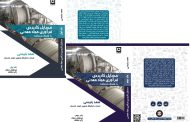عنوان مقاله
Lessons Learned from Using HPGR Technology to Increase Blaine Number of Final Iron Ore ConcentrateThe Gol-e-Gohar Industrial and Mining Company Case
نویسندگان این مقاله آقایان محمدحسین یزدانپناه، امیرعلی پورخسروانی، پیمان خادمی، علی تاجآبادی، خانم دکتر الهام نعمتاللهی و آقای دکتر صمد بنیسی میباشند.
چکیده مقاله:
The iron ore in the primary crushing and screening stage is reduced in size below 5 cm and is then fed to the primary high-pressure grinding roll (HPGR) (1.5 meter [m] x 1.1 m). The discharge of the HPGR after screening produces a product smaller than 8 mm which is then transferred to a ball mill (10.5 m x 5.5 m). The discharge of the ball mill is sent to a primary magnetic (cobber) separation stage where its concentrate is fed to cyclones working in closed circuit with the ball mill. The cyclone overflow with a P80 of 88 m is subjected to two stages of magnetic separation (roughing and cleaning) and the concentrate is desulfurized by reverse flotation. The concentrate is dewatered by belt filters to produce 290 t/h material with a moisture content of 8% to be stored in a bin before feeding the second HPGR. The Blaine number (expressed as the specific surface area of particles; cm2/g) of the feed to the second (regrind) HPGR is 1150 cm2/g which was expected to reach desired Blaine number of 1800 cm2/g which was not realized in practice. The Blaine fineness number is a key factor in mechanical and physical properties of the pellets. The high feed moisture content (i.e., higher than 9%) and roll quality were thought to be responsible for not reaching the desired Blaine number. Replacing the old roll with a new one increased the Blaine number from 1272±۱۶۶ to 1363±۱۷۷ cm2/g which was still far from the desired value (1800 cm2/g). To determine the effect of a lower feed moisture content, in addition to belt filter a part of the feed was sun dried. With a new roll and the lower feed moisture content (i.e., less than 8%) the Blaine number increased only to 1642±۲۸۲ cm2/g indicating that with the current flowsheet obtaining Blaine fineness of 1800 cm2/g or higher is not possible. It is speculated that if one closed-circuit ball mill is added to further grind the overflow of the first ball mill, the Blaine number will significantly increase. Furthermore, replacing the belt filter with a thickener and a pressure filter will provide the required moisture content of below 8%. It is thought these two major changes in the circuit will produce a concentrate with a Blaine number of higher than 1800 cm2/g.







